During our short trip to Vietnam, we also made a stop in Saigon. One moment we were in the beautiful and charming Hoi An, the next moment we were in a huge, loud, and chaotic metropolis. More than 8 million people live here. Crazy, right? I don’t think we’d ever been to a larger city at that point. But somehow we liked this city and the hustle and bustle on the streets. We’ll tell you what we experienced in Saigon, Vietnam in the following article. Enjoy browsing!
This might also interest you:
- Entry and Visa for Vietnam
- Best time to travel to Vietnam
- Our trip to Hoi An
- The best travel tips for Thailand
- The best travel tips for Malaysia
- Information and highlights in Indonesia
- Adventurous Hong Kong
- Travel tips & Highlights in Singapore
- You might also be interested in:
- General information about the city
- Getting to Saigon
- Airport transfer
- Accommodation in Saigon
- Withdraw money in Saigon
- Sights in Saigon
- Saigon Skydeck
- Notre Dame Cathedral
- Ho Chi Minh City Central Post Office
- Reunification Palace
- Nguyen Hue Street
- Opera House
- Off to China Town
- Former City Hall (City Hall)
- War Remnants Museum
- Backpacker Street
- Buu Long Pagoda
- Cao Đài Temple
- Excursions and Tours
- Markets & Shopping in Saigon
- Ben Thanh Market
- Binh Tay Market
- Our conclusion about Saigon
General information about the city
Saigon or Ho Chi Minh? So which one? The city was called Saigon until 1975, but the name is still used today, especially in Western countries. After the American troops withdrew, the city was named after its national hero, Ho Chi Minh. A large statue stands in front of the old city hall in Saigon.
It is thanks to him that the city was called Ho Chi Minh (abbreviation: HCMC). Nevertheless, the locals still like to call their city Saigon (SGN). As you can see, you can use both names when traveling to Vietnam. Saigon is also a good starting point in the south for a tour across Vietnam. A trip like this is still on our bucket list.
Getting to Saigon
You can easily reach Saigon by plane. We traveled from Hong Kong to Vietnam and from Saigon back to Malaysia. From Germany, you can get direct flights from Frankfurt with Vietnam Airlines for under €450. Alternatively, you can fly with a stopover from many other German airports. In Vietnam itself, you can fly to Saigon from Hanoi or Da Nang.

You can also travel by train. The Vietnamese rail network runs throughout the entire country, so you can travel to Saigon by train from almost all major cities. The journey from Hoi An, for example, takes around 10 hours, according to online information. So you should definitely allow yourself some time. Buses, however, take even longer. From Hoi An to Saigon, it takes around 25 hours. However, bus tickets are significantly cheaper than train tickets.
Important: For stays of more than 15 days, you will need a visa for your trip to Vietnam. All information can be found here: Vietnam Visa.
Airport Transfer
The fastest way to get to the city center from the airport is by taxi. However, you should be aware that the price depends heavily on your ability to negotiate. We paid €10 and found this price to be fair for this route. If you have internet access at the airport, you can also book a taxi using the UBER app, which is significantly cheaper than regular taxis.

You can also find some shuttle connections online that you can book in advance. According to our research, this is the most expensive option. However, there is also the inexpensive Airport Bus #152. Prices depend on the distance: for less than 5 km, you pay 12,000 dong, and for more than 5 km, 20,000 dong. The bus stops at various points in the city and ends at Ben Thanh Market. If you’re not in a hurry, the bus is the cheapest option.
Accommodation in Saigon
As you can probably imagine, there’s an oversupply of accommodations in this large city. We booked a central, private hostel room. This gave us perfect connections and allowed us to explore the city on foot. We booked a private room at “Lily’s Hostel” in advance for a mere €23 (quite expensive for Vietnam). This accommodation was really centrally located and had very good reviews online. A simple breakfast was also included.
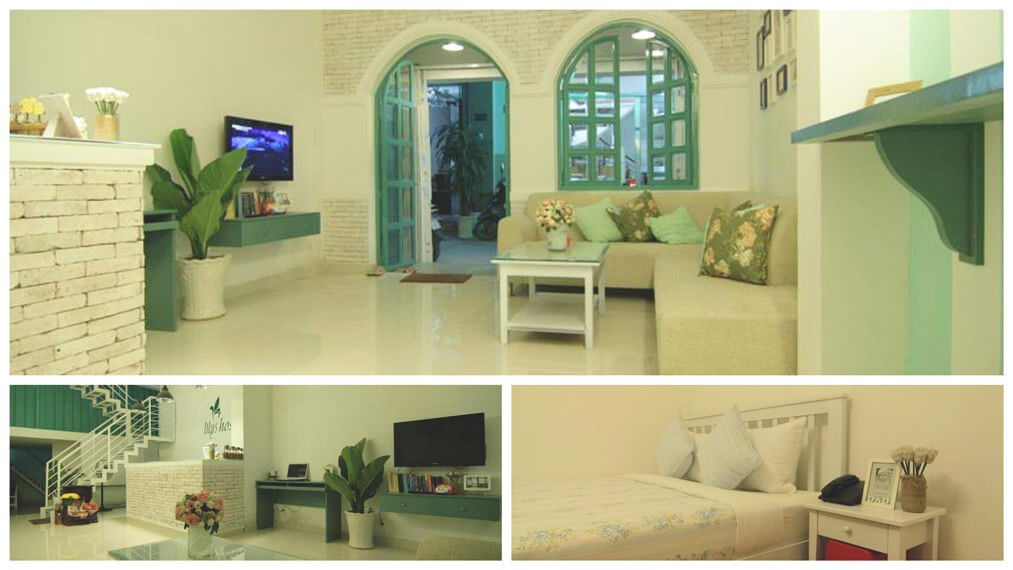
Backpackers and tourists usually settle around Bui Vien Street. It is the central meeting point and starting point for numerous tours through the city. You can probably imagine how lively this area is. There are many bars, shops, restaurants, and street food stalls. But that’s exactly what makes this area special. You can generally get a bed in Saigon for just €4, and a private room for €10-15. The city is also worth the price if you want to treat yourself. Even in really modern and chic 4-star hotels, you can stay for around €40-50 a night.
Accommodation Bui Vien Street & City:
- Cozy House 160*
- Nest Hotel*
- Jan Hostel*
- Green Suites Hotel*
- 4* Orchids Saigon Hotel*
- 4* Au Lac Legend Hotel*
- NOMADHOME – Luxury Apartments*
Withdrawing Money in Saigon
Of course, you want to get cash abroad, right? We definitely recommend a suitable travel credit card, with which you can even withdraw money for free in the best case scenario. Our tip: Don’t just carry one card with you. Something can always go wrong, and then you’ll find yourself without a credit card and cash.
In Vietnam, you pay with the Vietnamese Dong. Currently, you can get around 26,000 dong for one euro (as of May 2020). You can withdraw money at any ATM in the city. However, make sure the ATM is located in a bank, ideally, and not outside on the street. Everything about security and credit cards can be found here.
Sights in Saigon
There’s really a lot to see in Saigon. Besides museums, historical buildings, markets, temples, and pagodas, there’s so much more to discover. If you have a little time, you can see quite a lot in one day. Many things can easily be reached on foot. For longer journeys, we recommend an Uber.
Saigon Skydeck
Let’s start with something special: the Saigon Skydeck. You can actually spot this highlight from many other corners of the city. The view of the city from the 265-meter-high Bitexco Financial Tower is simply outstanding. The elevator takes you up to the 49th floor to the visitor terrace with a 360-degree view. Tickets currently cost 200,000 dong. The Skydeck is open daily between 9:30 a.m. and 9:30 p.m.
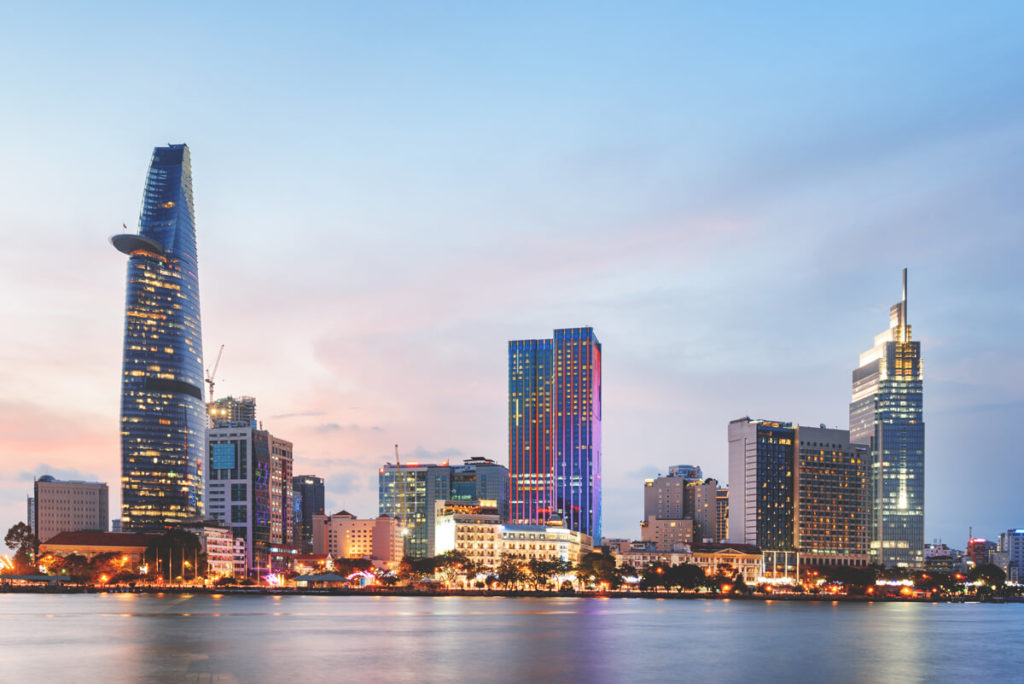
Notre Dame Cathedral
The beautiful Saigon Notre Dame Cathedral is located directly across from the post office. This place seemed somehow peaceful and idyllic amidst all the hustle and bustle. Amidst all the Asian culture, this cathedral is a real eye-catcher. Unfortunately, we couldn’t go inside because a mass was being held, and we were late. However, you can visit the cathedral free of charge every day between 8 and 11 a.m. and from 3 to 4 p.m.
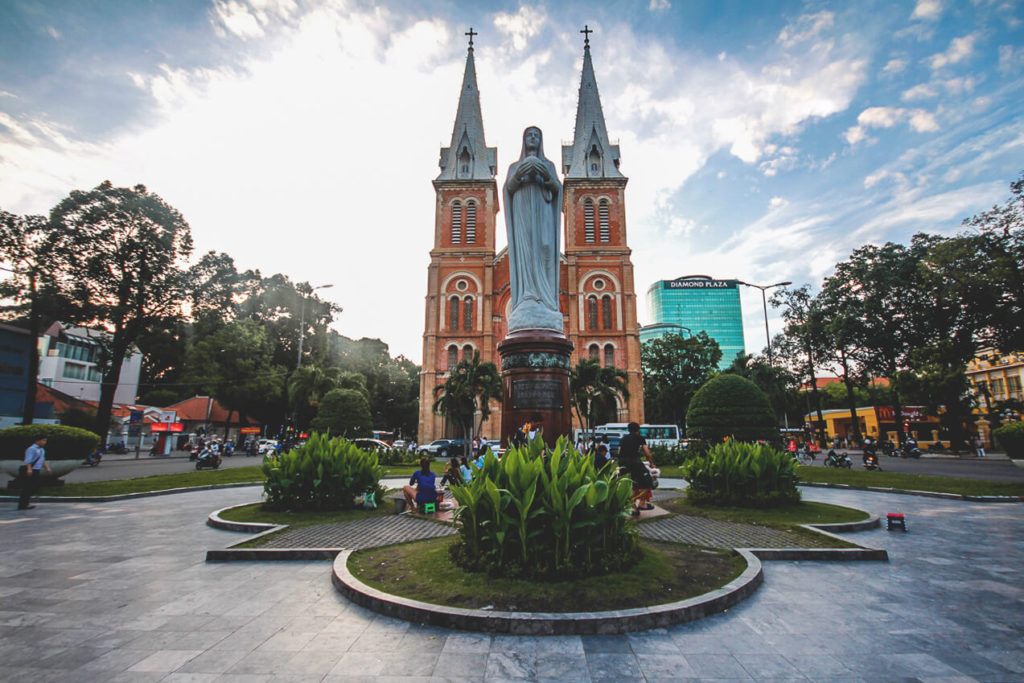
Ho Chi Minh City Central Post Office
Our tour continued to the old Central Post Office. This building is one of the city’s main historical attractions. As we walked in, we felt like we’d stepped back into the 19th century, thanks to the antique furniture, the ornate high ceilings, and, above all, the cool old telephone booths. The building still serves as a post office today—you can pick up parcels and other items here. Send letters and make phone calls.


Reunification Palace
The Reunification Palace is one of the city’s landmarks. The building served as the Independence Palace from 1955 to 1975 and was the residence and workplace of the President of South Vietnam during the war. The end of the Vietnam War was also sealed here after the fall of Saigon on April 30, 1975.
Nguyen Hue Street
Then we continued to Nguyen Hue. This street, parallel to Dong Khoi, was built as a boulevard and is also known as the Champs Elysées. At the end of the street is City Hall. Today, it’s a large promenade – lots of people mill around here, and it’s particularly busy in the evenings. When we got there, we saw lots of people riding on these futuristic Ninebots, and we thought: Let’s just do it! For just under €2 (50,000 dong) we rented the parts and drove up and down the boulevard for 30 minutes. It’s really fun and highly recommended for a bit of action in between.
Opera House
The beautiful theater with its bright white facade and majestic design is located in the heart of the lively District 1. The opera house is only accessible during events and can accommodate up to 1,800 people.
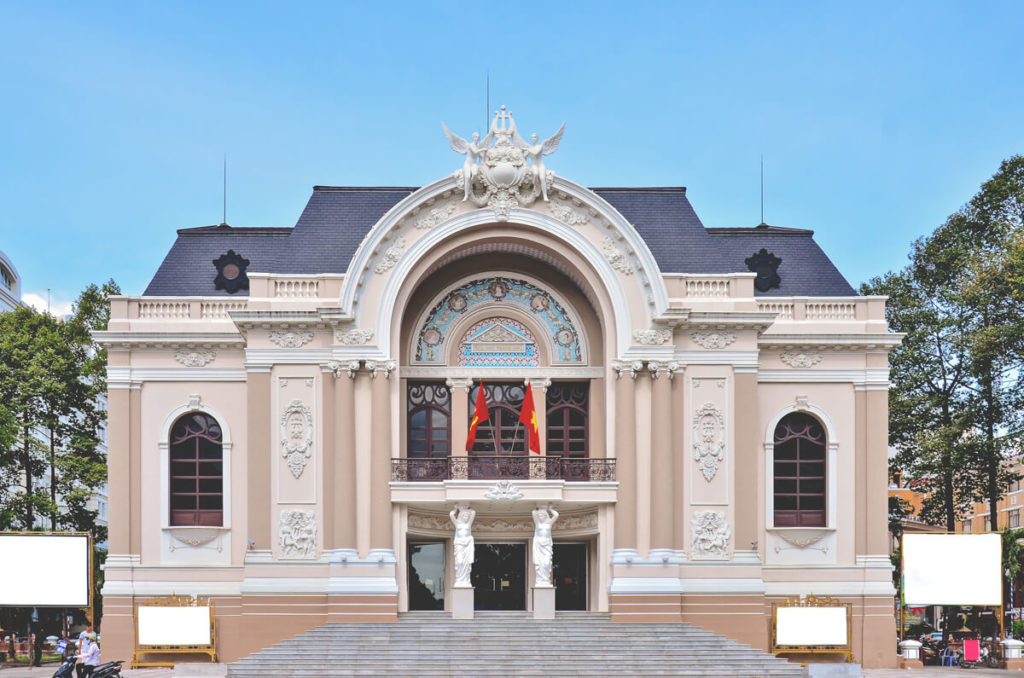
Off to China Town
Like almost every Asian city, Saigon also has aChina Town. It’s located in District 5, away from the many major sights. It’s a loud and bustling place. In addition to many street food stalls, you’ll also find numerous shops selling every kind of kitsch imaginable. The Thien Hau Temple is very beautiful. This Buddhist temple is open daily from 8 a.m. to 4:30 p.m. according to our online research.
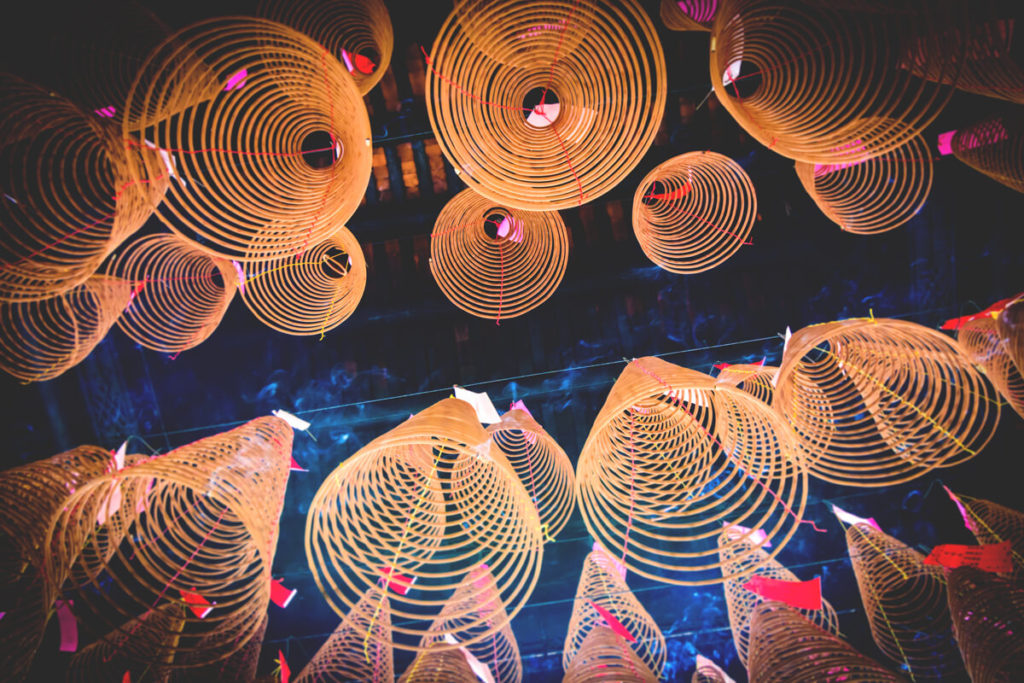
Former City Hall
In the south of the city, at the end of Nguyen Hue Street, is the Ho Chi Minh City Hall. It was built by the French at the beginning of the 20th century. The magnificent building is strikingly decorated, constructed in the colonial style, and its architecture is reminiscent of European castles. Today, the City Hall serves as the headquarters of the People’s Committee. If you have time, wait until evening to visit. Then the City Hall is spectacularly illuminated.
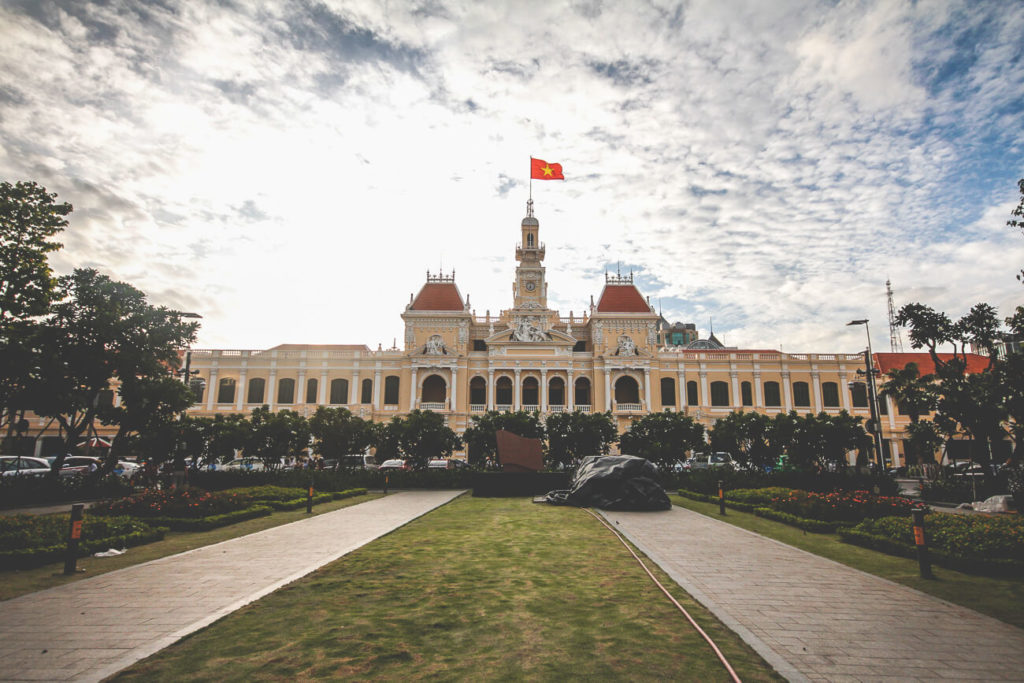
War Remnants Museum
This museum is not for the faint of heart. Really! The War Remnants Museum is one of the most popular museums in the country. Nothing has been filtered, altered, or sugarcoated in the exhibition. Here you will get a glimpse of the war from a Vietnamese perspective. Be aware that many images primarily depict suffering, death, corpses, and the like. The Vietnam War was fought in and around Vietnam from 1955 to 1975. It is considered one of the most horrific events in human history.
Opening hours: Daily between 7:30 a.m. and 6 p.m. Admission currently costs 40,000 dong (€1.53). Tours are available here*.
Backpacker Street
As mentioned above, Saigon has the so-called Backpacker Street. This is Bui Vien Street in District 1. It’s a real hive of activity. There are an incredible number of low-budget accommodations, restaurants, bars, shops, and street food stalls. In the evening, it gets a bit louder and wilder. The street is comparable to Khao San Road in Bangkok. If you enjoy being around people and drinking a few drinks in the evenings, this is the place for you. You can also shop and stroll here even late into the evening.
Buu Long Pagoda
You should definitely check out the Buu Long Pagoda. This beautiful Buddhist temple is located in District 9, in the east of the city. Here you’ll see the other side of Saigon, the rougher and wilder side. The pagoda sits on a hill and offers a great view of the surrounding area. You also somehow get the feeling of being in Thailand or Myanmar.

Cao Đài Temple
The temple is located northwest of Saigon, just under 80 km from the city. The temple is the largest of all the churches in Caodista. Marvel at the unique architecture with influences from Asia and Europe. The vibrant colors and shapes make the temple something truly special.
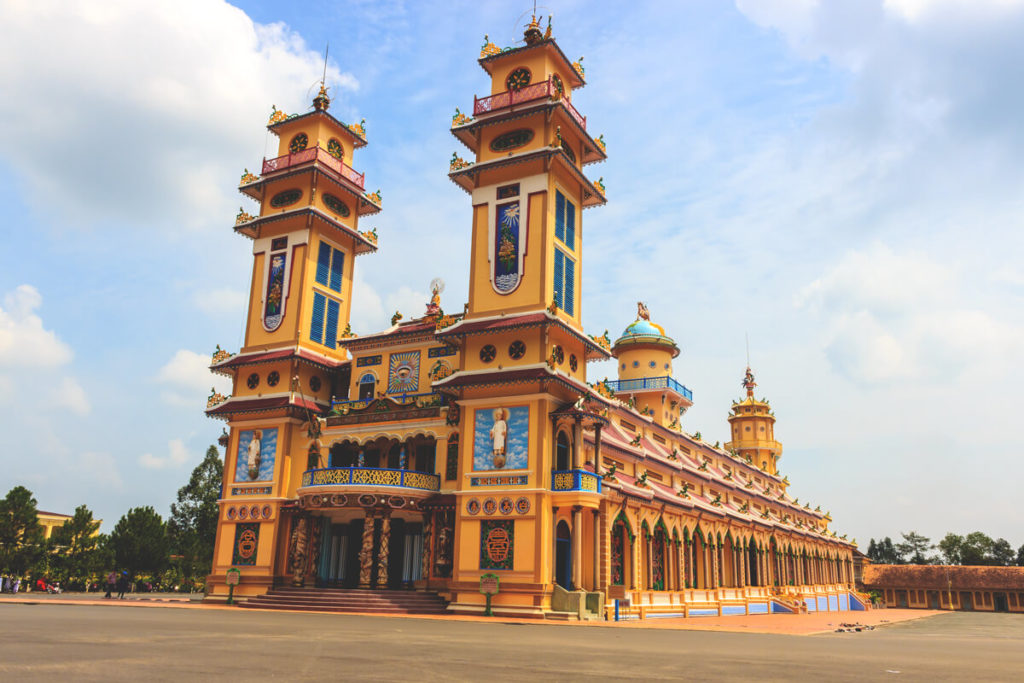
Excursions and Tours
You can take various excursions and tours from Ho Chi Minh City. For example, you can take a day trip from Saigon* to get a first impression of the region. You can also book multi-day trips* with an overnight stay and a visit to the floating markets. Unfortunately, we didn’t have time for excursions, as we were only in the city for two days. However, numerous tours are offered on the GetYourGuide website.

The tours to the Cu Chi Tunnels* are also very interesting. Here you can learn everything about the underground tunnel system and watch war documentaries afterward. Or visit the beautiful Cao Dai Temple* and learn all about the breathtaking architecture of Southeast Asia.
Markets & Shopping in Saigon
Ben Thanh Market
Our first stop was at the Ben Thanh Market. This huge market hall has absolutely everything – whether it’s fabrics, clothing, toys, food, shoes, jewelry, bags, accessories, ceramics, souvenirs, or kitsch. If you don’t mind being constantly approached, you’re sure to find a souvenir or two here.
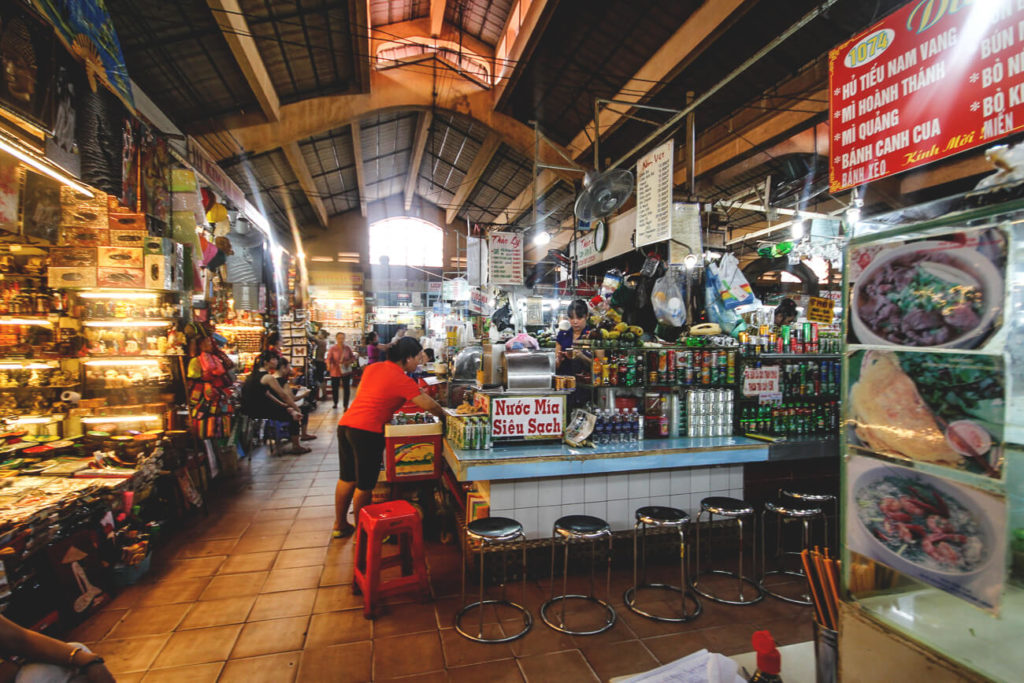
Binh Tay Market
One of the city’s liveliest markets is the Binh Tay Market in China Town. You can reach it by taking bus line 1 to Cholon, as the market is located in the west of the city (fare 5,000 dong). From the last stop, it’s easy to continue to the entrance of the huge market hall. Here, you can find practically anything you can imagine.
In addition to these markets, you’ll find many other shopping opportunities in Saigon. These include the Saigon Center, Diamond Plaza, Takashimaya Vietnam Center, Vincom Center, Saigon Square, An Dong Market (Craft Market), and Parkson Plaza Department Store.
Our conclusion about Saigon
We had a short but cool time in the city. In the end, despite its 8 million inhabitants, it wasn’t as stressful as we initially expected. The city is incredibly fun, and the people are all very nice and friendly. You can experience great highlights here, enjoy delicious food, and go on cool excursions.
Plus, Vietnam is an affordable travel destination, so you don’t have to forgo any comfort. You get a lot for your money here. You should definitely plan at least 2 nights. Then you can explore the city’s most important highlights in a relaxed manner.